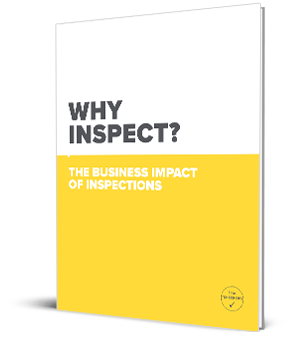For many business owners, audits and inspections of assets are nothing more than a necessary evil done solely for the purpose of covering legal and other regulatory requirements. If this is the case for your business, it's safe to say that your audits and inspections are largely a waste of time.
One could even go as far as saying that doing them only for the sake of doing them, is a self-fulfilling prophecy. If you look at them as nothing more than a chore, then that's what they become, and they will only minimally help you. You’ll miss out on a tremendous opportunity to reduce your costs in addition to notably decreasing the chance of an accident.
The Usefulness of Safety Inspection Checklists
The key to any successful audit or inspection is the inspection checklist. However, such a checklist can't be generic; otherwise, many critical items could easily not be checked. Instead, inspection checklists need to be tailored specifically to the type of equipment or other asset that's being examined.
Inspection checklists need to be easy to read and fill out, allowing the user to check all critical components seamlessly and effectively. Either done on paper or digitally on mobile devices, inspection checklists that are detailed and asset-specific will ensure that the equipment is thoroughly inspected before beginning operations.
How Do Safety Inspection Checklists Reduce Costs and Save Money?
The staple of a proper inspection checklist is that it guides the user regarding how to utilize it. These checklists should be ordered based on functionality, not in alphabetical order. They should streamline the process, not hinder it. They should also reinforce the company's emphasis on auditing or inspecting the proper way.
Checklists like that will result in numerous cost-saving benefits such as:
- Reducing project delays and labor unproductivity. This is achieved by eliminating unexpected asset malfunctions and the downtime that will occur because of it.
- Lowering maintenance costs. When issues are discovered and corrected in time, they won’t become large and more-expensive problems down the line.
- Eliminating recurring issues that are a result of asset misuse. Inspection checklists will work to prevent personnel from abusing assets since the damage will be immediately pinpointed.
- Reducing the risk of injury and related costs. This is done by identifying potential hazards and preventing unsafe or malfunctioning assets from being used.
- Enabling management to make use of the data generated from these thoroughly performed and documented inspections. They can more-efficiently schedule maintenance procedures, maximize productivity, determine trends, better budget for equipment downtime, and evaluate equipment value and quality.
- Creating and reinforcing a company culture that emphasizes workplace safety. Inspection checklists will constantly remind your personnel of the importance and benefits of safety, as well as let them know that your company places a lot of value on supplying them with equipment and other assets that are always in peak operational shape.
Takeaway
By using well-crafted checklists, every organization can turn their daily inspections from a "chore" into a competitive advantage. However, this will be up to those in key management positions. If they want to transform a "necessary evil" into a financial benefit, they can with the right inspection checklists.
Image: http://401kcalculator.org











